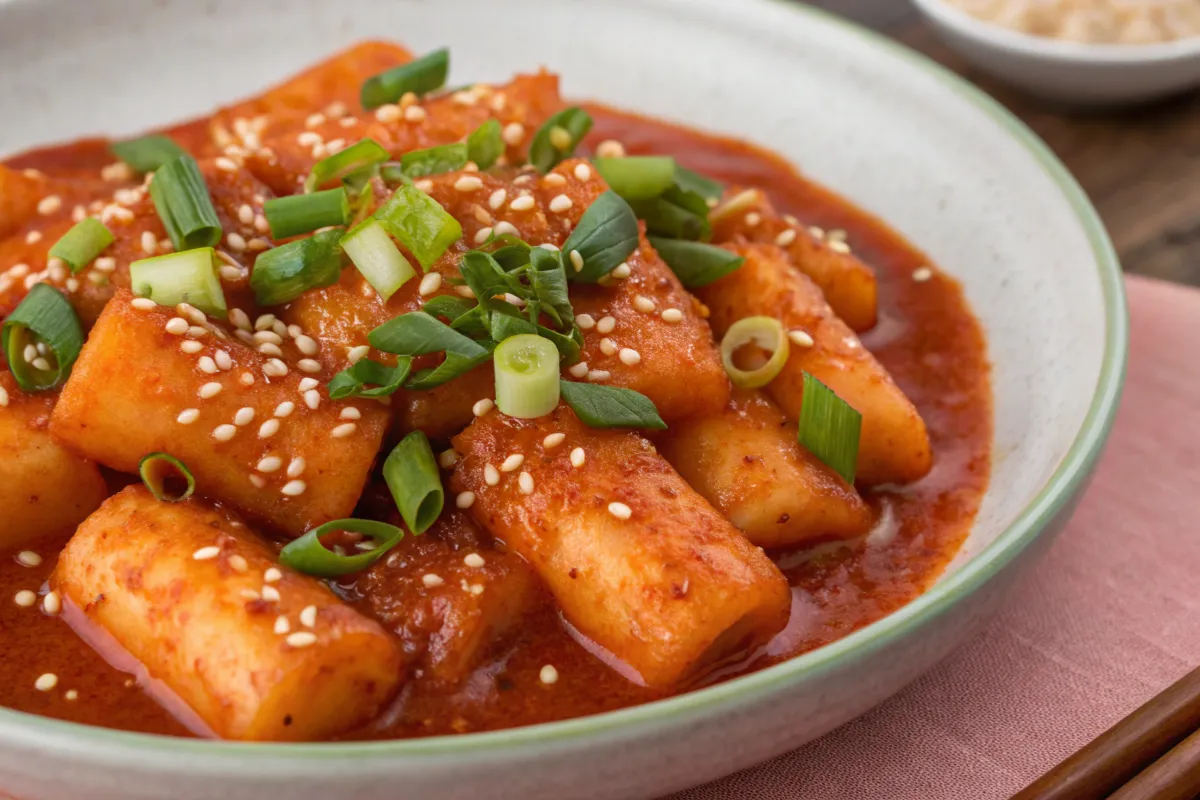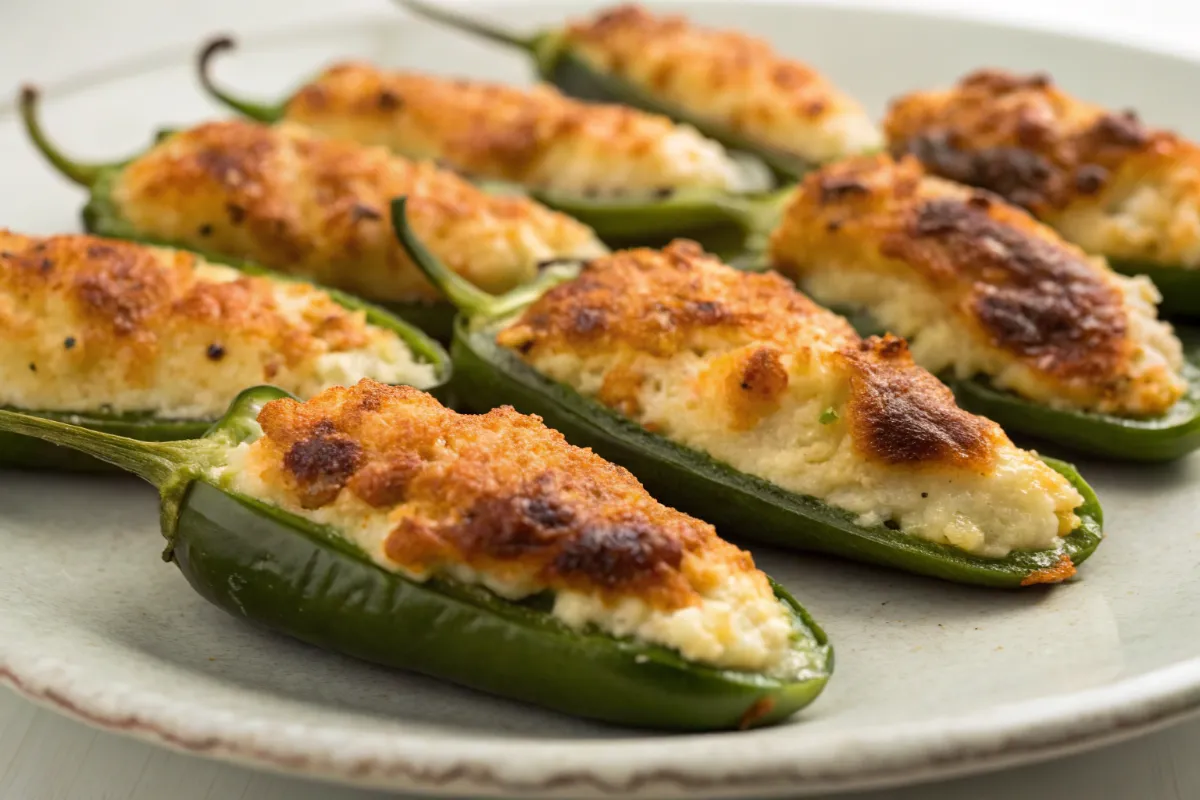If you love bold flavors and the delightful chew of rice cakes, then this tteokbokki recipe is a must-try! This iconic dish is a staple in Korean cuisine, loved for its fiery gochujang-based sauce balanced by sweetness. Whether you’re familiar with Korean food tteokbokki recipes or trying it for the first time, this recipe brings out authentic flavors in just under 30 minutes. The satisfying combination of soft rice cakes and spicy sauce makes it a popular street food and a comfort dish that is easy to recreate at home.
Origins and Fun Facts
Tteokbokki has a long history in Korean cuisine, with origins dating back to the royal courts of the Joseon Dynasty. Originally a savory, soy sauce-based dish, it evolved over the years into the fiery red gochujang version we know today. Tteokbokki is enjoyed by people of all ages in Korea, often sold by street vendors or pojangmacha. It’s considered comfort food and is frequently paired with sundae (Korean blood sausage) or boiled eggs for a heartier meal.
Table of contents
Recipe Card
Why This Tteokbokki Recipe Works
This tteokbokki recipe stands out because it nails the trifecta of flavor, texture, and simplicity. At its heart, it’s a street food dish, but one that carries surprising complexity. The base is a rich, spicy broth made with anchovy-dashi stock that enhances the depth of gochujang, Korea’s famous fermented chili paste. A hint of sugar balances the heat, while a dash of soy sauce and minced garlic add aromatic depth.
But the real stars? The cylindrical rice cakes, or garaetteok, which soak up the sauce like flavor sponges. Soft, chewy, and slightly elastic, they create a unique mouthfeel that no pasta or noodle can replicate.
Unlike some versions that may lean too heavy on sweetness or lack depth, this recipe layers flavors with just the right balance. The anchovy broth adds an umami punch, while optional additions like fish cakes (eomuk), hard-boiled eggs, or scallions elevate it to a meal rather than just a snack.
Customization Options:
- Vegetarian/Vegan: Swap the anchovy broth for kombu (kelp) and shiitake dashi, and skip the fish cakes and eggs.
- Less Spicy: Reduce the amount of gochugaru (Korean red pepper flakes), or opt for a mild gochujang.
- Gluten-Free: Ensure your gochujang and soy sauce are certified gluten-free.
- Protein Boost: Add tofu cubes, shrimp, or even sliced beef for a heartier version.
By using widely available Korean pantry staples, this tteokbokki recipe brings authentic street food vibes into your home kitchen, no passport needed.
Tips for Making the Best Tteokbokki recipe
- Use fresh rice cakes: Fresh tteok gives the best chewy texture. If using frozen, ensure to soak them thoroughly to soften.
- Customize your heat: While gochujang is the base for spice, you can tone it down by adding a bit more sugar or increase the heat with extra gochugaru.
- Stir constantly: To prevent the rice cakes from sticking to the bottom of the pan, stir regularly, especially in the first few minutes.
- Add protein: For a more filling meal, you can add shrimp, beef slices, or tofu.
- Leftovers: Tteokbokki can be stored in the fridge for up to 2 days, but the rice cakes may harden. Reheat gently on the stove with a splash of water.
- Customize the Broth: Adding a little dashi instead of plain water enhances the umami flavor, giving the dish more depth.
- Extra Creaminess: If you like your tteokbokki creamy, stir in some cheese at the end of cooking for a unique twist on this classic Korean food tteokbokki recipe.
- Cook Slowly: Simmer the rice cakes long enough to let them absorb the sauce, but be careful not to overcook, as they can become mushy.
Recipe Variants
- Cheese Tteokbokki: Add mozzarella or cheddar cheese for a creamier texture that tempers the spiciness.
- Seafood Tteokbokki: Include shrimp, squid, or clams for a seafood twist on the classic recipe.
- Tteokbokki with Ramen (Rabokki): Add instant ramen noodles to the dish for extra carbs and texture.
- Vegetarian Tteokbokki: Skip the fish cakes and add mushrooms or tofu for a plant-based option.
- Extra Spicy Tteokbokki: Amp up the heat by adding more gochugaru or even chili oil.
FAQ of the Tteokbokki recipe
Yes! Reduce the amount of gochujang and gochugaru, or add a bit more sugar to balance the heat.
Tteokbokki can be stored in an airtight container in the refrigerator for up to 2 days. Reheat on the stove with a little water to loosen the sauce.
You can use tofu, mushrooms, or even sliced sausages as a substitute for fish cakes.
Rice cakes (tteok) can be found in most Asian grocery stores or online. They come in fresh, refrigerated, or frozen varieties.
Soaking the rice cakes in warm water for 10-15 minutes before cooking will soften them and prevent them from becoming too chewy.
Final Thoughts
This Tteokbokki recipe is more than just a dish, it’s a gateway into Korean street food culture, bursting with bold flavors and comforting textures that’ll warm your soul any time of year. Whether you keep it classic or try one of the tasty variants, it’s an irresistible addition to your weeknight rotation or your next dinner party spread.
If you’re in the mood to explore more Asian-inspired comfort food, don’t miss this savory and flavorful Chicken Pad Thai recipe for a noodle-lovers dream. Or try a rich and easy twist on another street food staple with this Ground Beef Bulgogi recipe, a perfect pairing with rice or lettuce wraps. Craving something fusion-friendly? You’ll love the crave-worthy Bang Bang Chicken as a spicy, creamy companion to your tteokbokki feast.
Tteokbokki invites creativity, and once you master the base, the sky’s the limit. From sweet-and-spicy to savory-rich, it’s a dish that keeps on giving. So go ahead, grab those rice cakes and let your kitchen channel the sizzling magic of Seoul’s street stalls.











Leave a Reply